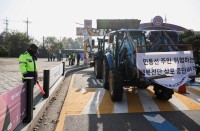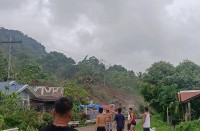APRIL 30 (Reuters) — Many survivors of the Nepal earthquake were still waiting to be evacuated from rural mountainous regions on Thursday (April 30), as the United Nations said relief efforts need to be scaled up.
Local Nepalese television broadcast footage on Thursday (April 30) showed hundreds of survivors of the Nepal earthquake desperately trying to board a helicopter.
Reuters cannot independently identify the locations or confirm the dates the video was filmed.
More than 5,000 people were killed and at least 10,194 people injured in the Himalayan country’s worst earthquake in more than 80 years, and the many aftershocks that followed.
Rescue helicopters have been unable to land in some remote mountainous areas such as the worst-hit district of Gorkha as entire hillsides have collapsed, burying settlements, and making access almost impossible.
Government officials admit aid has been slow. Broken bridges and roads blocked by landslides have made it difficult to reach rural areas closer to the epicenter of the earthquake.
The 7.8 magnitude quake rocked the impoverished nation on Saturday (April 25), toppling thousands of buildings in the densely-populated Kathmandu Valley, where the capital is located, and triggering avalanches in mountainous regions, including Mount Everest.
Tensions between foreigners and Nepalese desperate for relief have surfaced, rescuers said, as fresh avalanches were reported in several areas.
Members of Israeli search-and-rescue group Magnus said hundreds of tourists, including about 100 Israelis, were being airlifted out of Langtang in Rasuwa district, a popular trekking area north of Kathmandu hit by a fresh avalanche on Tuesday.
Fights had broken out there because of food shortages, Magnus team member Amit Rubin said. One of the trekkers said there had also been scuffles over places on the rescue helicopters.
The United Nations, which launched a $415 million appeal on Wednesday (April 29) as survivors grew frustrated at the slow delivery of aid, estimates that eight million people have been affected by the quake. (Nepal)








